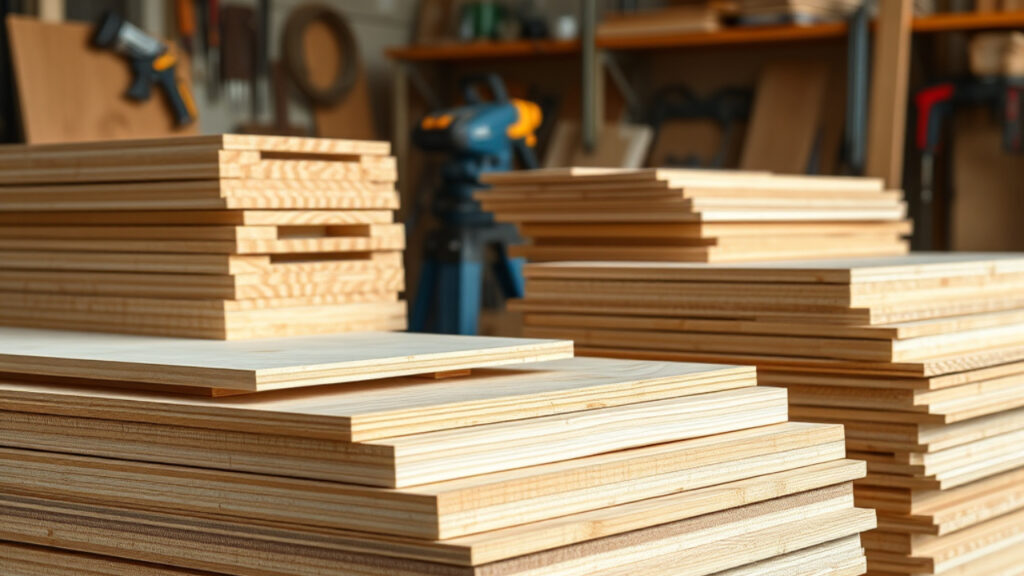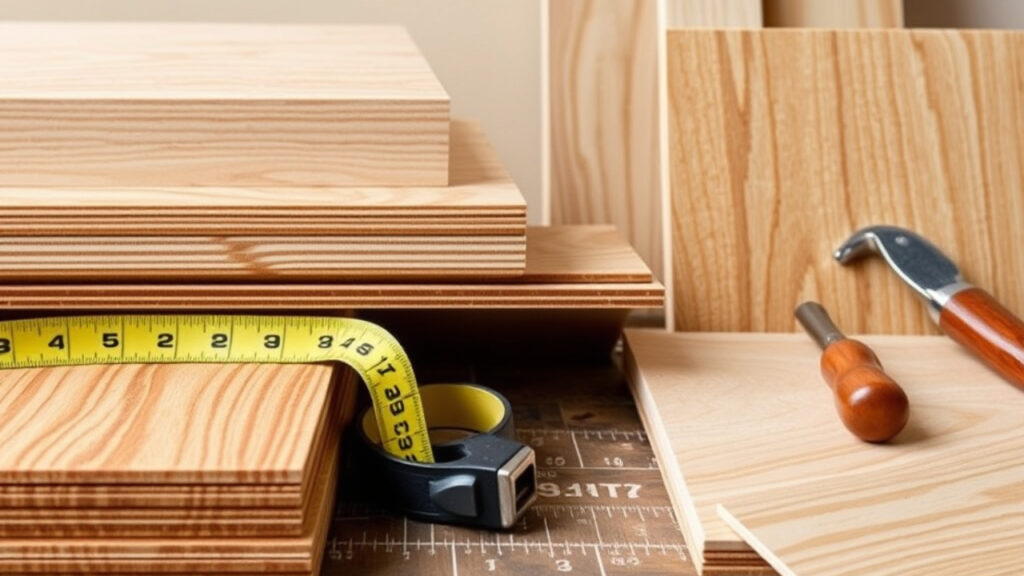Softwood Plywood: The Ultimate Guide to Uses, Benefits, and Buying Tips
Table of Contents
- Introduction to Softwood Plywood
- What is Softwood Plywood?
- How is Softwood Plywood Made?
- Types of Softwood Plywood
- Key Features of High-Quality Softwood Plywood
- Softwood Plywood vs. Hardwood Plywood: Key Differences
- Top Uses of Softwood Plywood
- Construction & Roofing
- Furniture & Interior Design
- Flooring & Wall Paneling
- Packaging & Crating
- DIY Projects & Home Improvements
- Advantages of Using Softwood Plywood
- Trending Softwood Plywood Uses in 2025
- How to Choose the Best Softwood Plywood
- Best Softwood Plywood Brands in the Market
- Cost of Softwood Plywood: Budgeting Tips
- How to Maintain and Protect Softwood Plywood
- Is Softwood Plywood Waterproof? Everything You Need to Know
- Eco-Friendly and Sustainable Softwood Plywood Options
- Frequently Asked Questions (FAQs)
- Conclusion
1. Introduction to Softwood Plywood
Softwood plywood is a versatile and cost-effective engineered wood product widely used in construction, furniture, packaging, and home improvement projects. Known for its strength, lightweight structure, and easy workability, softwood plywood is a popular choice among builders and DIY enthusiasts alike.
In this guide, we’ll explore the latest trends, uses, benefits, and key buying tips for softwood plywood.
2. What is Softwood Plywood?
Softwood plywood is made from softwood tree species like pine, fir, cedar, and spruce. It consists of multiple layers of thin wood veneers bonded together with a strong adhesive. The cross-grain layering technique enhances its strength, durability, and resistance to warping.
Key Characteristics of Softwood Plywood:
✔ Lightweight and easy to handle
✔ Strong and durable for structural applications
✔ Available in multiple thicknesses and grades
✔ Cost-effective compared to hardwood plywood
3. How is Softwood Plywood Made?
The production of softwood plywood follows these steps:
- Log Selection & Peeling: High-quality softwood logs are chosen and peeled into thin veneers.
- Drying Process: The veneers are dried to remove moisture.
- Layer Arrangement: Veneers are stacked with alternating grain directions for maximum strength.
- Glue Application: High-quality adhesives like phenolic resin or urea-formaldehyde are applied.
- Hot Pressing: The layers are bonded together under heat and pressure.
- Trimming & Finishing: The plywood sheets are cut, sanded, and finished.
- Quality Check: The final product undergoes rigorous strength and durability tests.
4. Types of Softwood Plywood
1. Pine Plywood
🔹 Lightweight and easy to work with
🔹 Commonly used for furniture and interior décor
2. Fir Plywood
🔹 High strength and durability
🔹 Ideal for construction and outdoor projects
3. Cedar Plywood
🔹 Naturally resistant to moisture and pests
🔹 Used in exterior cladding and roofing
4. Spruce Plywood
🔹 Offers a smooth and uniform surface
🔹 Perfect for flooring and wall paneling
5. Key Features of High-Quality Softwood Plywood
✅ Lightweight yet Strong: Softwood plywood is easy to transport and install.
✅ Resistant to Warping: Alternating grain layers prevent shrinkage and expansion.
✅ Affordable and Cost-Effective: A budget-friendly alternative to hardwood plywood.
✅ Versatile Applications: Suitable for both indoor and outdoor projects.
6. Softwood Plywood vs. Hardwood Plywood: Key Differences
| Feature | Softwood Plywood | Hardwood Plywood |
|---|---|---|
| Wood Type | Made from pine, fir, cedar, spruce | Made from oak, teak, birch, maple |
| Density & Strength | Lighter, flexible, yet strong | Heavier and more rigid |
| Common Uses | Construction, furniture, packaging | High-end furniture, flooring, luxury interiors |
| Cost | More affordable | More expensive |
7. Top Uses of Softwood Plywood
1. Construction & Roofing
🔹 Used for subfloors, roofing, and wall sheathing in residential and commercial buildings.
2. Furniture & Interior Design
🔹 Ideal for tables, chairs, shelves, and modular kitchen cabinets.
3. Flooring & Wall Paneling
🔹 Provides a sturdy and smooth surface for flooring and decorative wall panels.
4. Packaging & Crating
🔹 Preferred material for making strong and lightweight wooden crates and pallets.
5. DIY Projects & Home Improvements
🔹 Used by homeowners and DIYers for crafting shelves, workbenches, and decorative items.
8. Advantages of Using Softwood Plywood
✔ Lightweight & Easy to Handle
✔ Cost-Effective Alternative to Solid Wood
✔ Versatile & Multipurpose
✔ Easy to Cut, Shape, and Finish
✔ Available in Multiple Thicknesses
9. Trending Softwood Plywood Uses in 2025
🚀 Eco-Friendly Homes – Sustainable softwood plywood is gaining popularity in green construction.
🚀 Prefabricated Furniture – Ready-to-assemble plywood furniture is a major trend.
🚀 Smart Modular Kitchens – Softwood plywood cabinets with premium finishes are in high demand.
10. How to Choose the Best Softwood Plywood
🔹 Check for ISI & FSC Certifications – Ensures quality and sustainability.
🔹 Select the Right Thickness – Common options: 6mm, 12mm, 18mm, and 24mm.
🔹 Inspect Surface Quality – Ensure smooth finishing and minimal gaps.
🔹 Verify Moisture Resistance – Choose the right plywood for humid environments.
11. Best Softwood Plywood Brands in the Market
🏆 Mario Plywood – Trusted for high-quality construction-grade plywood.
🏆 Greenply – Offers eco-friendly and durable plywood options.
🏆 CenturyPly – Known for versatile and affordable plywood products.
12. How to Maintain and Protect Softwood Plywood
🛠 Keep it Dry – Avoid prolonged exposure to water.
🛠 Apply Protective Coatings – Use laminates, paints, or varnishes.
🛠 Prevent Pest Damage – Choose termite-resistant plywood variants.
13. Is Softwood Plywood Waterproof? Everything You Need to Know
Standard softwood plywood is moisture-resistant but not waterproof. For outdoor and wet-area applications, marine-grade or BWP plywood is recommended.
14. Eco-Friendly and Sustainable Softwood Plywood Options
🌱 FSC-Certified Plywood – Ensures responsible forestry practices.
🌱 Low-VOC Adhesives – Reduces indoor air pollution.
15. Frequently Asked Questions (FAQs)
Q1: Can softwood plywood be used for outdoor furniture?
A: Yes, but it should be treated with waterproof coatings.
16. Conclusion
Softwood plywood is a budget-friendly, strong, and versatile option for construction, furniture, and home improvement projects. Selecting the right grade ensures durability and long-lasting performance.



